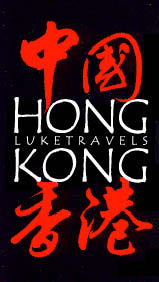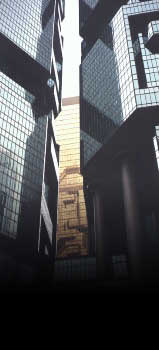| |
Hong Kong: Economy
Hong Kong's international significance accelerated in the second half of the 20th century--not only from the explosive growth of its industry but also from the reemergence of China as a participant in world trade and politics. It is strategically positioned at the center of the most rapidly growing area of the world--the Pacific rim. A philosophy of free trade and minimal taxes and regulations attracted investment from around the world. Its location in respect to the trading day made it the center of world trading while London and New York City sleep. It is also the gateway for trade with the most populous nation on Earth. China depends on the territory to provide the bulk of its foreign exchange and investment.
Hong Kong has no substantial natural resources, and 90 percent of what it needs is imported. Much of its income is from services it provides as a transshipment and warehousing gateway between China and Southeast Asia and the rest of the world.
Manufacturing is led by the textile industry, followed by toys and electronics. Hong Kong exports more watches, clocks, and radios than any nation in the world. China and the United States are its major customers.
Despite the strength of the manufacturing base, the service sector of the economy is larger than the industrial sector and provides three quarters of the jobs. Hong Kong is the shopping, dining, fashion, and entertainment mecca
of Asia. It is the movie capital of the world, with more feature
films and videos produced in the territory than anywhere else. |
 |
|
Hong Kong is one of the world's busiest shipping centers and continually attempts to upgrade its port facilities with expanded airport and container port facilities. About 12,000 oceangoing vessels call at the port each year. These and hundreds of Chinese sampans, sailing junks, ferryboats, hydrofoils, and pleasure craft create a bustling and exciting atmosphere.
After a slump
caused by the region wide Asian financial crisis that began in 1997,
Hong Kong's economy had been on the rebound. Real GDP growth was 4%
in 1999 and reached double digits in the first half of 2000.
However, the dot-com bubble in the second half of 2000, the 9/11
terrorist attacks upon the United States in 2001 and the SARS
outbreak in 2003 had severely damaged the economy of Hong Kong. In
2004 and 2005, real GDP grew by 8.6% and 7.3% respectively.
After peaking at 6.3% in 1999, the unemployment rate eased back to
4.8% in mid-2000. As of October 2005, the unemployment rate was
5.3%, with an underemployment rate of 3.0%.
In August 1998, the government intervened in the stock, futures, and
currency markets to fend off "manipulators." The banking sector
remains solid, and the government is committed to the U.S.-Hong Kong
dollar link.
Hong Kong's Victoria harbor has facilitated rapid development of
foreign trade. Hong Kong's principal trading partners include
Mainland China, the United States, Japan, Taiwan, Germany,
Singapore, and South Korea.
Hong Kong enjoyed economic growth in the past because of its strong
manufacturing sector, but in recent years the service sector has
surpassed it in importance and now accounts for 85% of GDP. The
major components of Hong Kong's service trade are shipping, civil
aviation, tourism, and various financial services. Hong Kong has one
of the world's most sophisticated telecommunications and information
technology infrastructures and functions as a major regional and
international financial and commercial center.
GDP - purchasing power parity - $227.3 billion (2005 est.)
GDP - real growth rate: 7.3% (2005)
GDP - per capita: purchasing power parity - $32,900 (2005 est.)
GDP - composition by sector:
-
agriculture: 0.1%
- industry:
9.2%
- services:
90.6% (2005 est.)
Population
below poverty line: 4%
Household income or consumption by percentage share:
- lowest 10%:
NA%
- highest
10%: NA%
Inflation rate
(consumer prices): 0.9% (2005 est.)
Labor force: 3.61 million (Oct 2005 est.)
Labor force - by occupation:
- wholesale
and retail trade, restaurants, and hotels 31%
- financing,
insurance, and real estate 13%
- community
and social services 11%
-
manufacturing 7%
- transport
and communications 6%
-
construction 2%
- other 30%
(2001 est.)
-
Unemployment rate: 4.9% (July 2006 est.)
Budget:
revenues: $31.31 billion. Expenditures: $32.3 billion, including capital expenditures of $5.9
billion (2005 est.)
Foreign Currency Reserve Assets: $972.32 billion (December 2005
est.).
Total assets of the Exchange Fund including the Foreign Currency
Reserve Assets: $1068.9 billion (December 2005).



|
|

